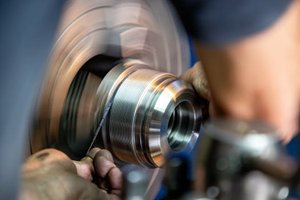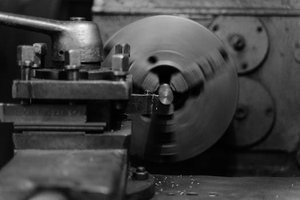The Hidden Challenge: Why Dimensioning Errors Cost More Than You Think
In CNC turning, a drawing isn’t just a blueprint—it’s a contract for precision. A single misplaced dimension or ambiguous tolerance can derail production, as I learned the hard way during an aerospace shaft project. The part failed inspection due to an underspecified concentricity callout, forcing a full batch rework.
Case Study: The $50k Tolerance Mistake
- Part: Titanium turbine shaft (⌀50mm × 300mm)
- Error: Missing GD&T concentricity control (assumed ±0.01mm, but drawing only specified ±0.05mm)
- Result: 200 scrapped parts, 3-week delay, $50k loss
Key Insight: Always define critical tolerances explicitly—never assume default machine precision.
Expert Strategies for Bulletproof CNC Turning Drawings
1. Dimensioning Hierarchy: What to Prioritize
Focus on:
🔹 Functional surfaces (e.g., bearing seats) – Tight tolerances (IT6-IT7)
🔹 Non-critical features – Looser tolerances (IT8-IT9) to reduce costs
🔹 GD&T over +/- tolerancing – Controls relationships like runout or perpendicularity more effectively
Table: Cost Impact of Tolerance Grades
| Tolerance Grade | Cost Multiplier | Typical Use Case |
|—————-|—————-|——————|
| IT6 | 2.5x | High-speed bearings |
| IT8 | 1.0x (baseline)| General machining |
| IT10 | 0.6x | Non-functional features |
2. GD&T Pitfalls to Avoid
- Overuse of Profile of a Surface: Can unnecessarily inflate inspection time.
- Ambiguous Datums: I once saw a drawing where Datum A was labeled on two non-coaxial features—chaos ensued. Always ensure datums are physically accessible and stable.

3. Software Tricks for Efficiency
- Model-Based Definition (MBD): Embed dimensions directly in 3D CAD (saved 30% drafting time in a recent medical device project).
- Automated Tolerance Stack Analysis: Tools like Sigmetrix catch interference risks early.

Real-World Optimization: A Step-by-Step Approach
Step 1: Start with the End Use
- Interview the assembly team. In one case, adding a 0.1mm chamfer to a press-fit component eliminated 90% of installation damage.
Step 2: Leverage Process Capability Data
- If your lathe holds ±0.005mm consistently, don’t specify ±0.002mm without justification.
Step 3: Annotate for the Machinist
– Add notes like “Break all edges 0.2mm max” to prevent deburring delays.
The Future: AI-Driven Dimensioning?
A pilot project using AI (Siemens NX) reduced dimensioning errors by 40% by cross-referencing similar historical drawings. While not yet mainstream, this signals a shift toward predictive design assistance.
Final Takeaway: A perfect CNC turning drawing balances clarity, manufacturability, and cost—always dimension with the machinist and inspector in mind.
By sharing these lessons, I hope you’ll sidestep the expensive mistakes that shaped my expertise. What’s your toughest dimensioning challenge? Let’s discuss in the comments.
